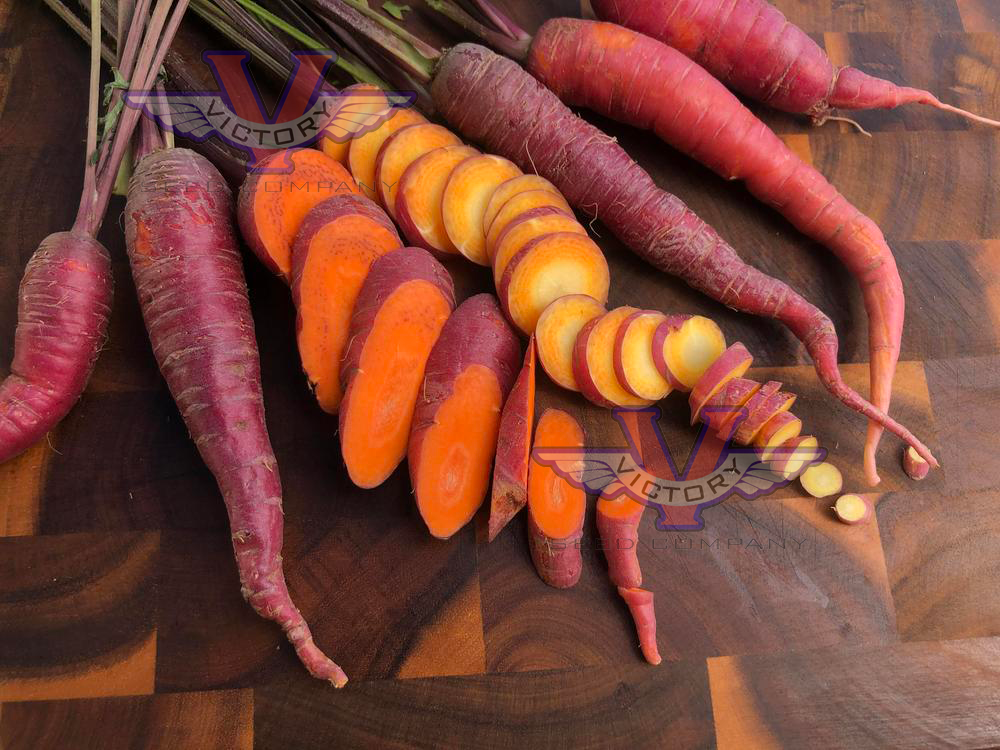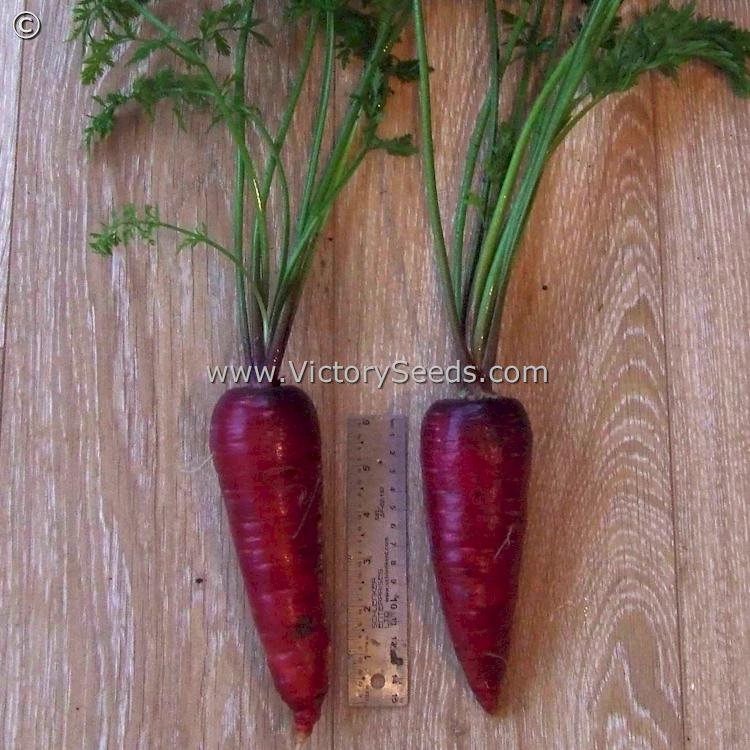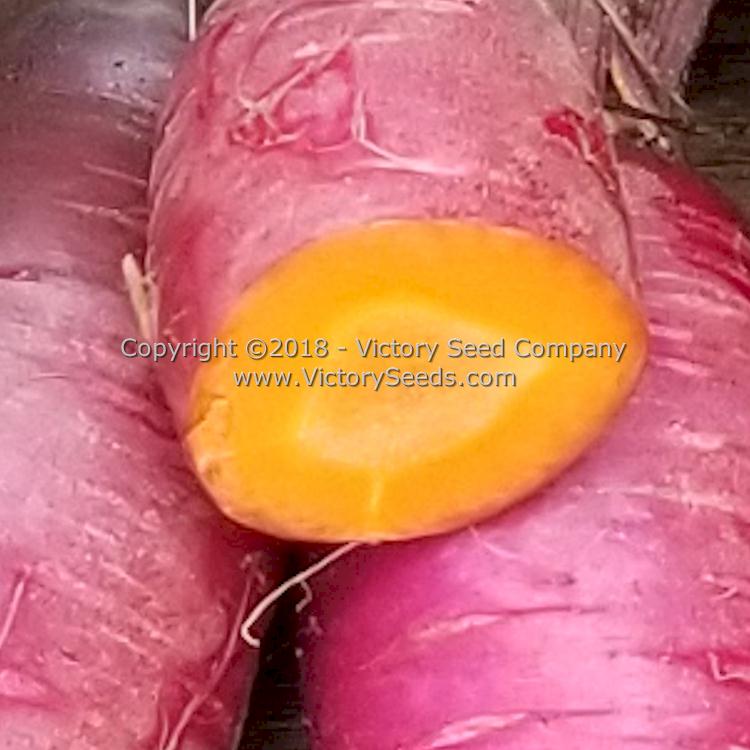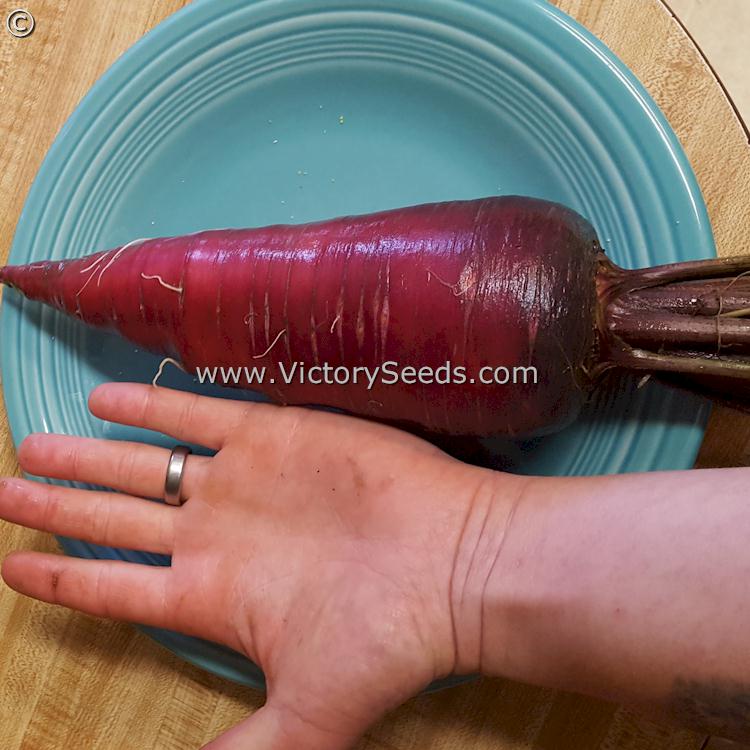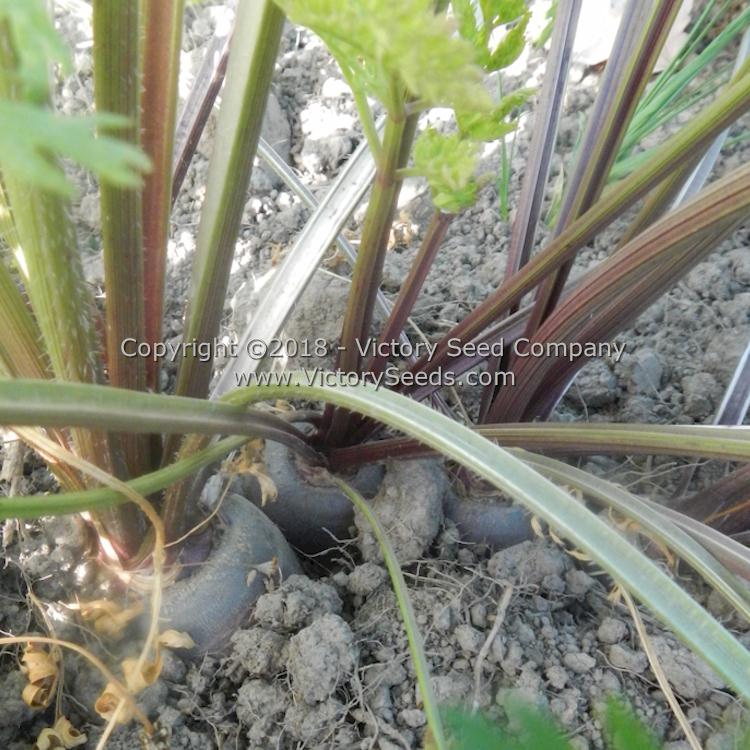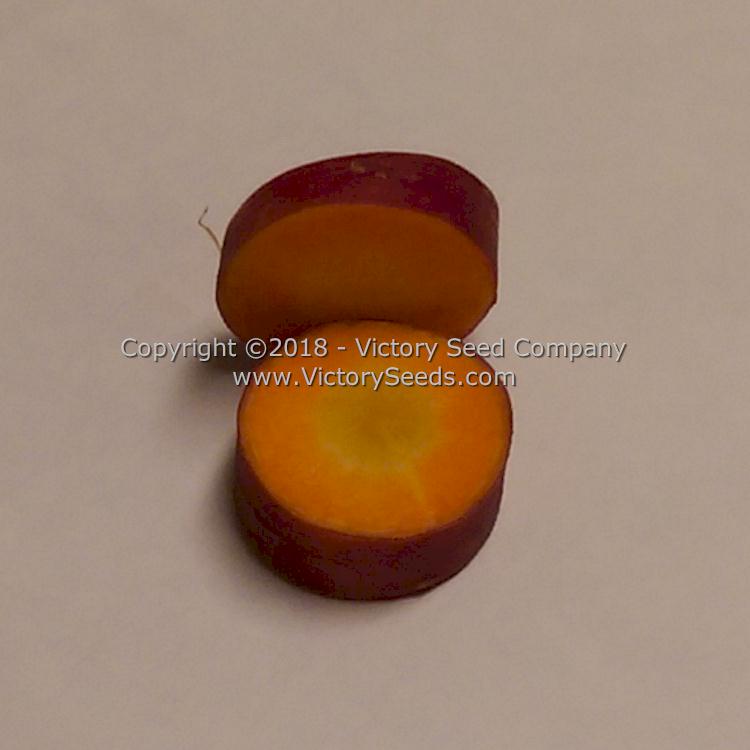Cosmic Purple Carrot (Organic)
Cosmic Purple Carrot (Organic)
Couldn't load pickup availability

60 days — Thanks to the work of Dr. Philipp Simon and staff at the USDA Agricultural Research Station in Madison, Wisconsin, a whole rainbow of colored carrots have become available since the early 2000s. Although purple colored carrots have been cultivated in Afghanistan, Turkey and Middle East since about 900 A.D., this variety was released in 2005.
'Cosmic Purple' plants are large, reaching fifteen to twenty-four inches in height, and produce carrots that are bright purple in color on the outside and orange on the inside. They make an interesting, tasty, and sweet addition to a veggie platter. 'Cosmic Purple' is a six to eight inch long, Danvers-type carrot.
According to the USDA[1], purple carrots contain the pigments (and antioxidants) anthocyanin, beta carotene and alpha carotene which they report as benefiting health by helping to prevent heart disease and strokes. Each packet contains one gram, which is approximately 700-750 seeds.
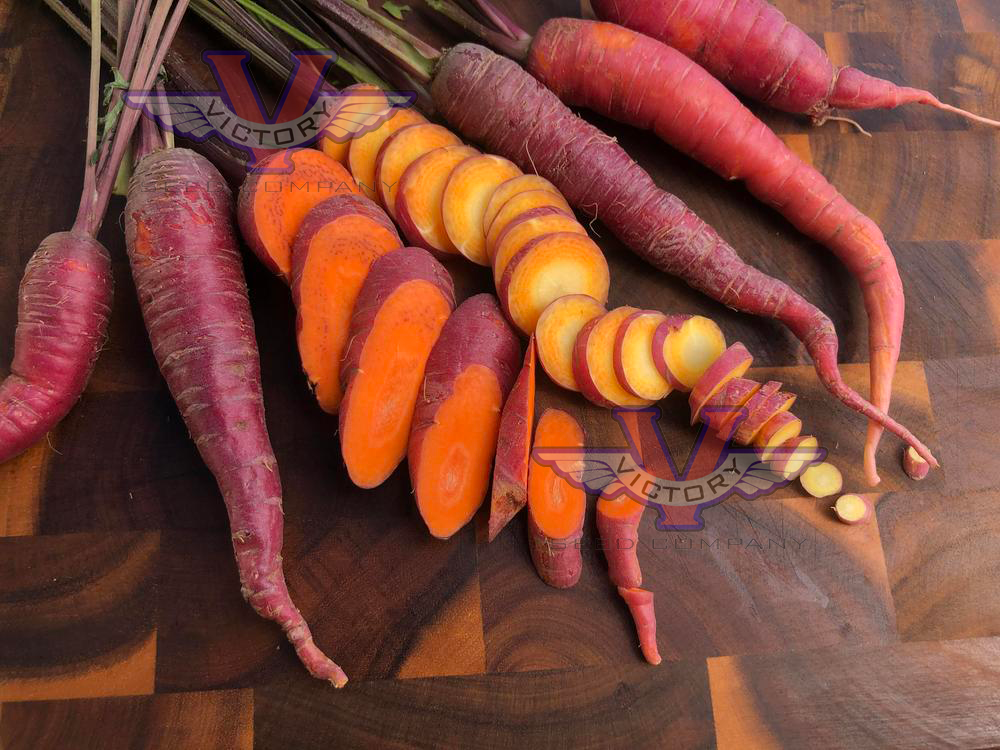
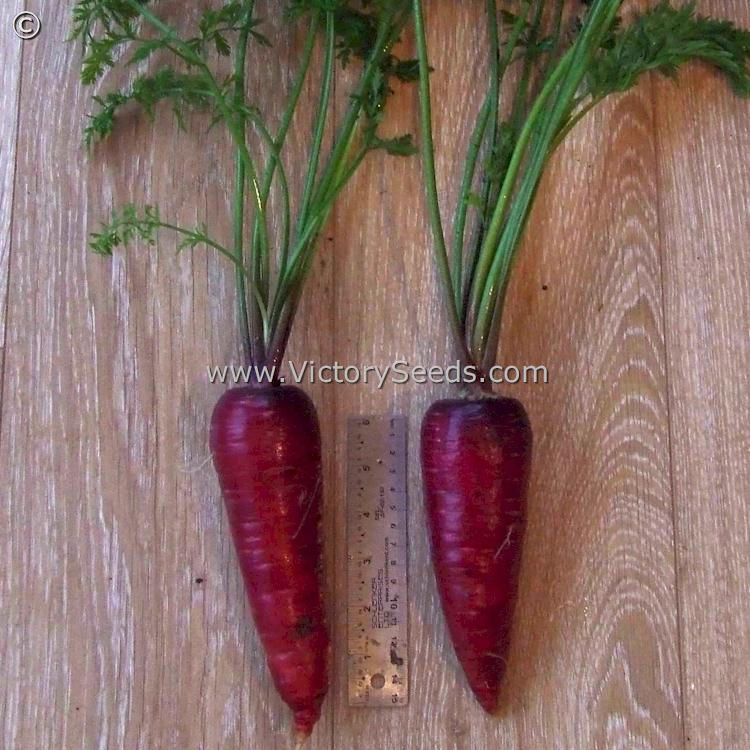
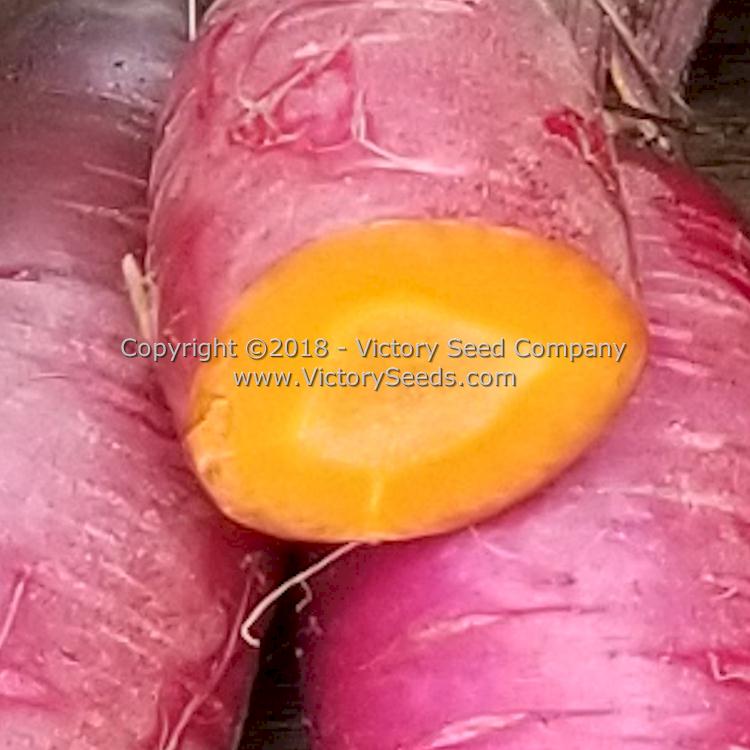

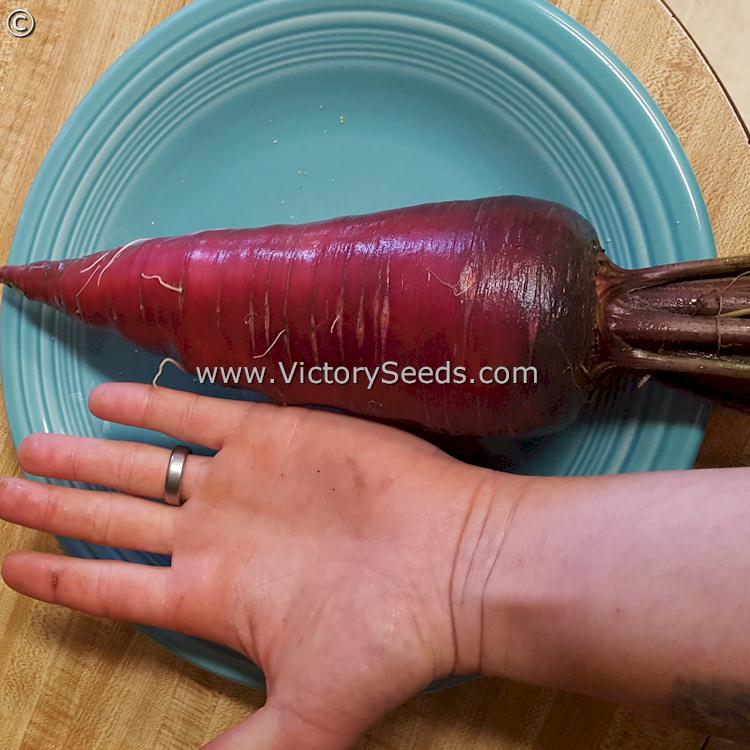

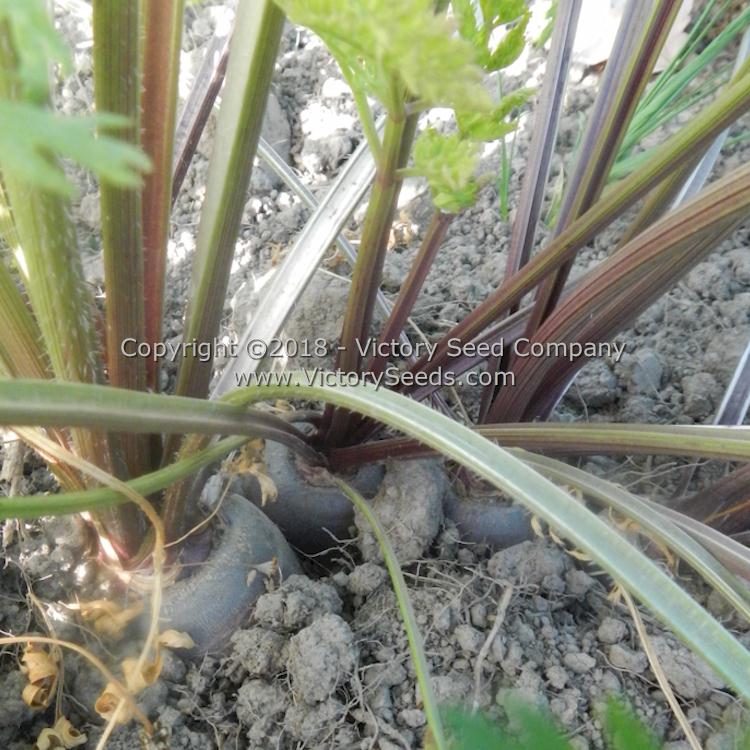
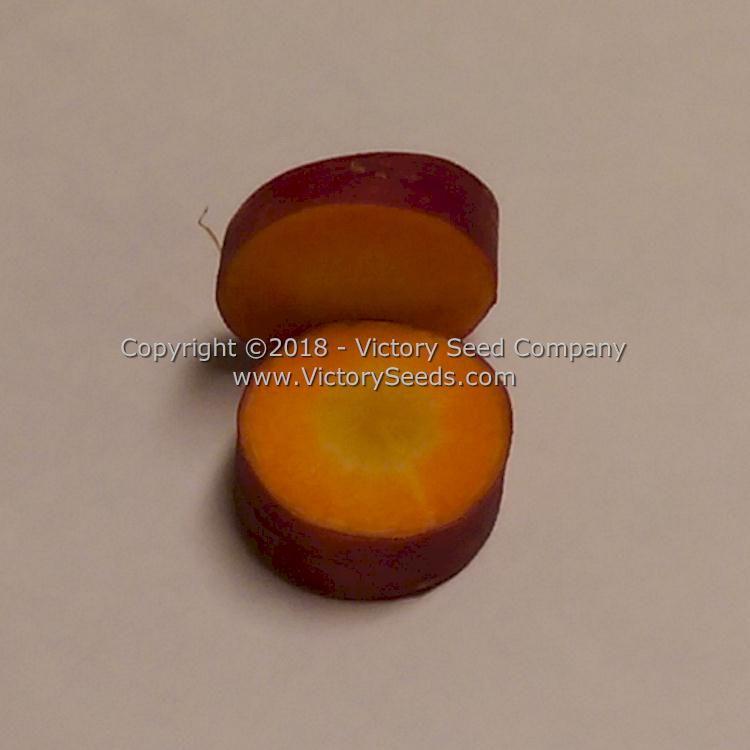
Plant outdoors in spring as soon as the ground can be worked. Plant seeds ¼ inch deep, ½ inches apart in rows that are spaced 12 to 18 inches apart.
Keep moist until germination. Thin to 1 to 2 inches apart after the seedlings are 1½ inches tall.
Water as required and keep soil cultivated to control weeds. Informational References:
- "Pigment Power in Carrot Colors", USDA ARS Vegetable Research Service
Explore our vegetable collections:
[ Artichokes | Asparagus | Beans | Beets | Broccoli | Sorghums | Brussels Sprouts | Cabbage | Cantaloupe | Carrots | Cauliflower | Celery | Collard Greens | Corn | Cucumber | Eggplant | Endives | Gourds | Kale | Kohlrabi | Leeks | Lettuce | Mesclun Mix | Mustard Greens | Okra | Onions | Parsley | Edible Pod Peas | Garden Peas | South Peas | Hot Peppers | Mild Peppers | Pumpkins | Radishes | Rapini | Rhubarb | Salad Greens | Salsify | Summer Squash | Winter Squash | Swiss Chard | Tomatillo | Tomatoes | Dwarf Tomato Project | Turnips | Watermelons ]

